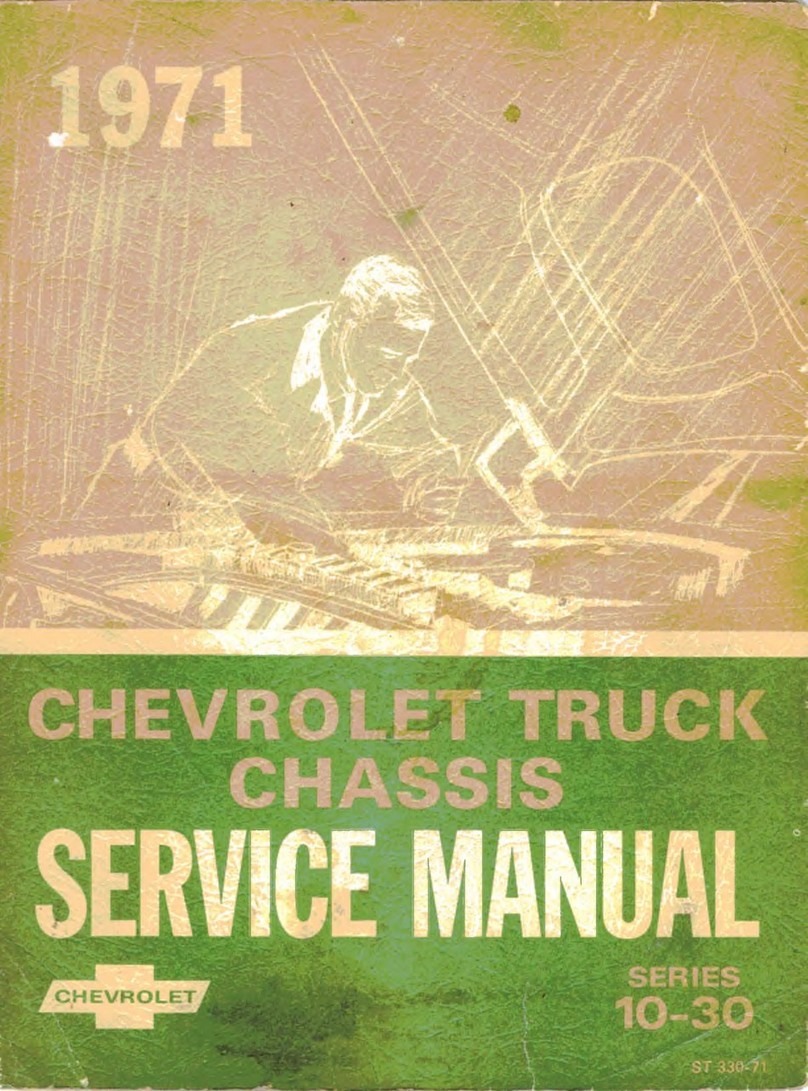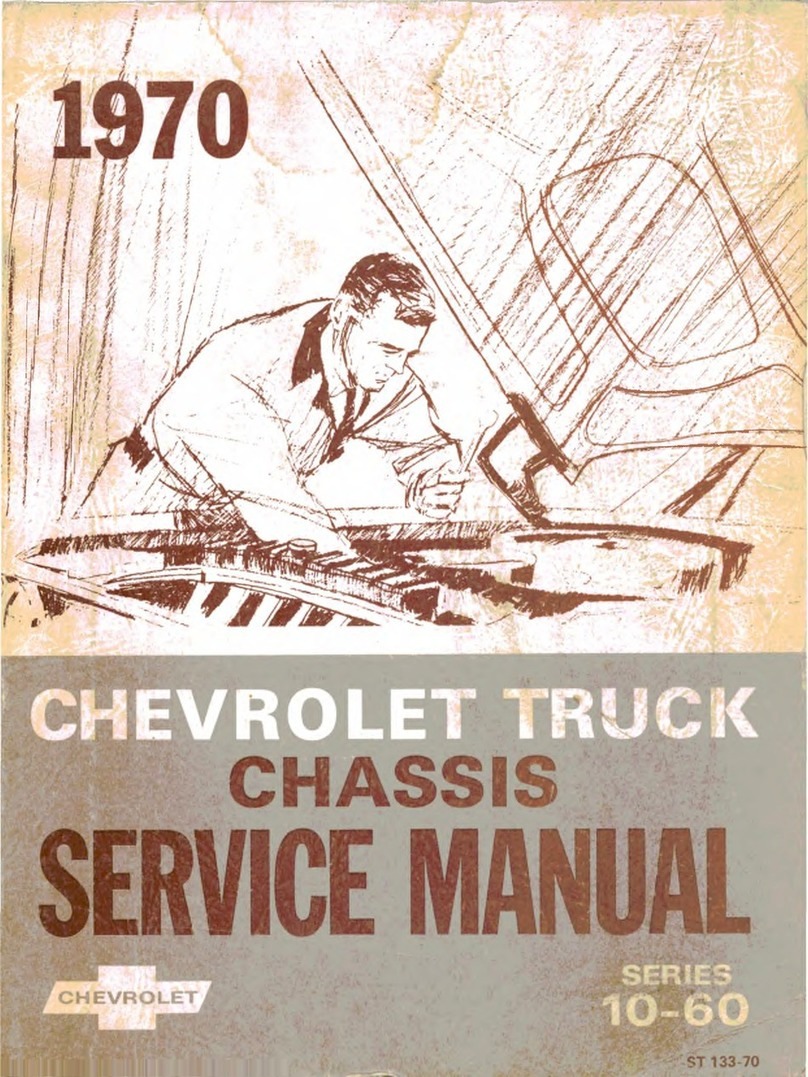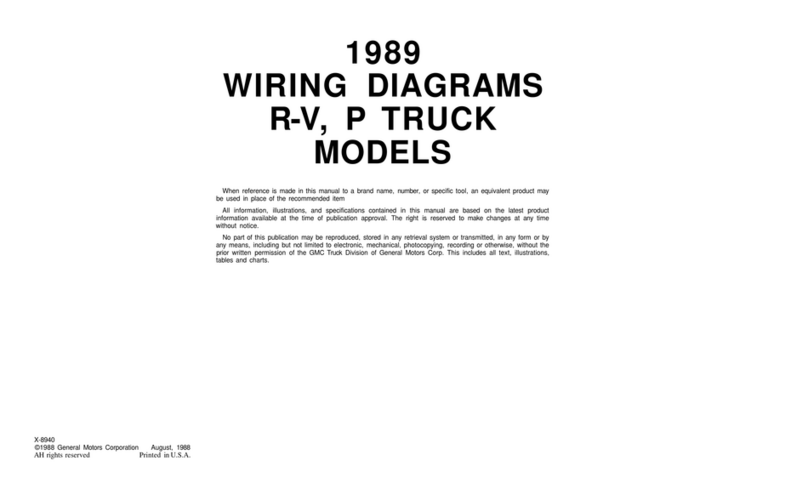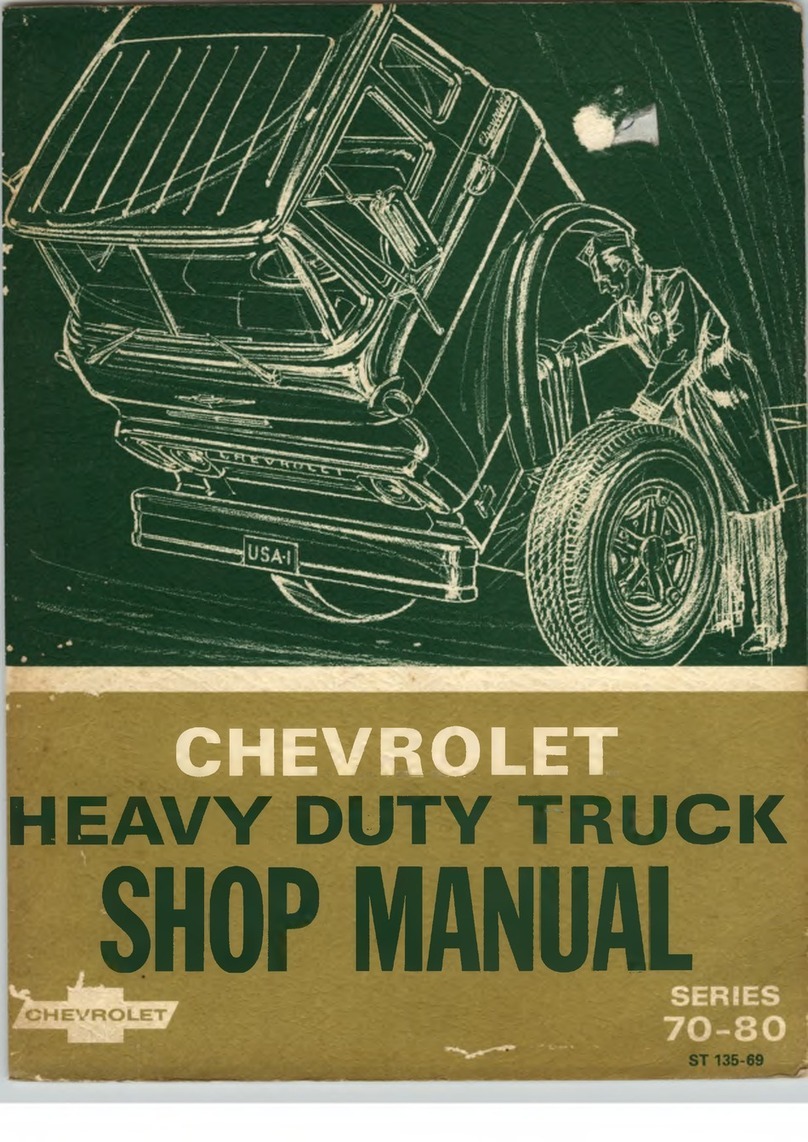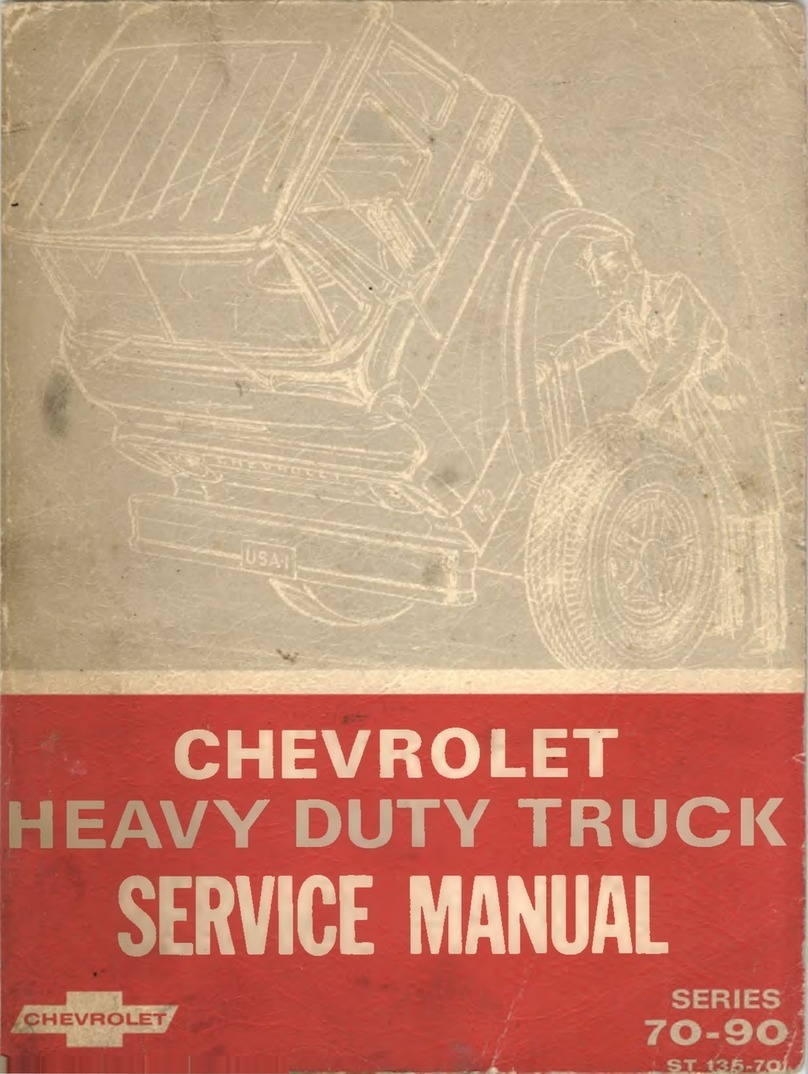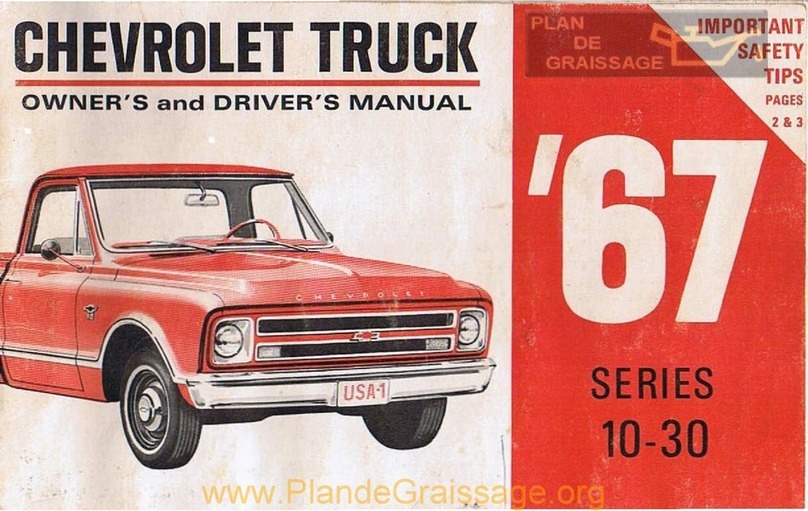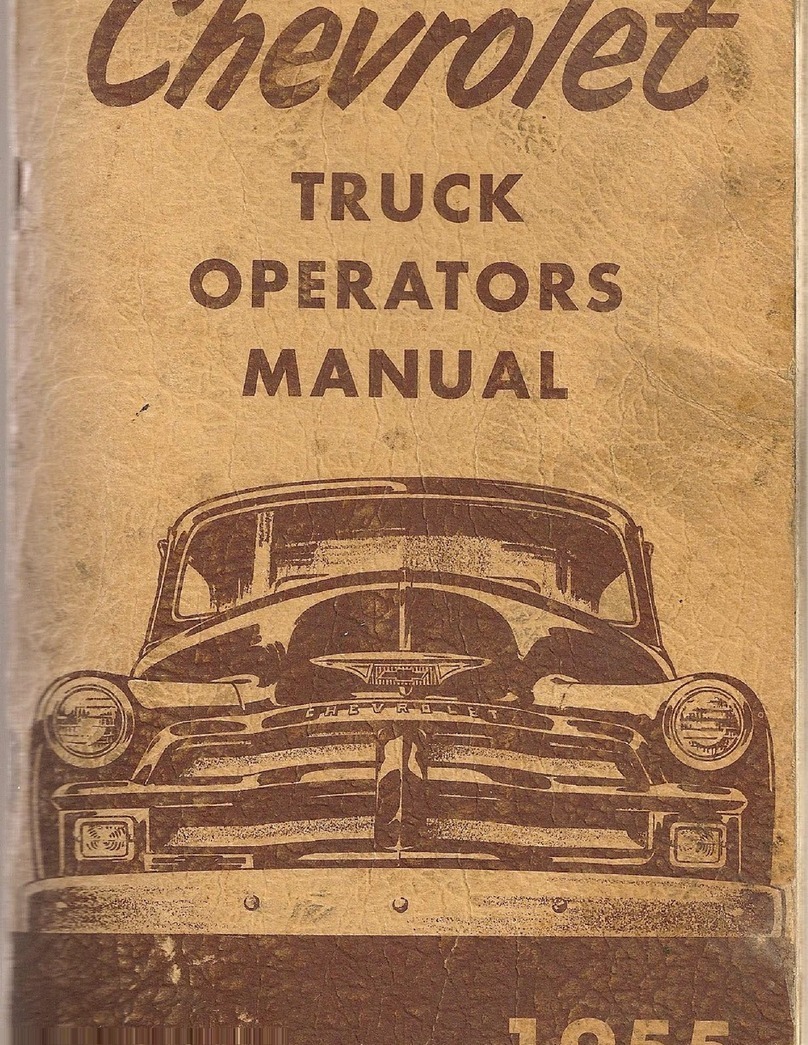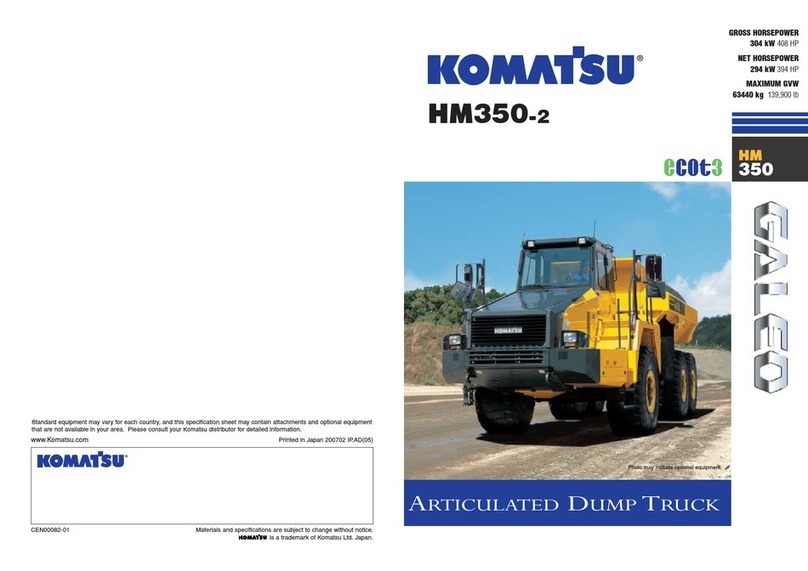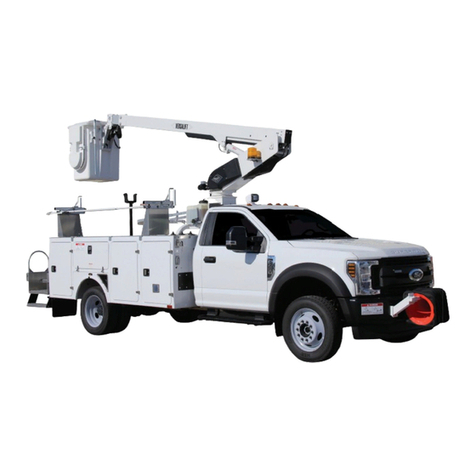
SECTION OA
GENERAL INFORMATION
CONTENTS OF THIS SECTION
Truck Model Identification.......................................... 0-1
Vehicle Identification Nu ber and Rating Plate
........
0-1
Engine Nu ber
............................................................ 0-1
Unit and Serial Nu ber Locations.............................. 0-1
Service Parts Identification Plate................................. 0-1
Keys and Locks........................................................... 0-3
Towing
......
.
................................................................... 0-3
Vehicle Loading
........................................................... 0-3
TRUCK ODEL IDENTIFICATION
All 10-35 series odels are identified by the odel
syste shown in the chart on the following page. Basically
the designation consists of 7 characters, 2 letters followed
by five nu bers. The first letter indicates a odel and the
second identifies the chassis type. The first nu ber
designates the GVW range, the second and third identify
the cab-to-axle di ension or odel type and the last two
identify the cab or body style. See Figure OA-1.
VEHICLE IDENTIFICATION NU BER AND
RATING PLATE
A co bination vehicle identification nu ber and
rating plate used on all odels (fig. 0A-2) is located on the
left door lock pillar of C-K-G odels. On Forward Control
odels, it is attached to the dash and toe panel.
The vehicle identification nu ber sta ped on the plate
decodes into the infor ation shown in Figure 0A-3.
ENGINE NU BER
The engine nu ber indicates anufacturing plant,
onth and day of anufacture, and trans ission type. A
typical engine nu ber would be F1210TFA, which would
breakdown thus:
F - Manufacturing Plant (F-Flint, T-Tonawanda)
12 - Month of Manufacture (Dece ber)
10 - Day of Manufacture (tenth)
T - Truck
FA - Trans ission and engine type
UNIT AND SERIAL NU BER LOCATIONS
For the convenience of service technicians and
engineers when writing up certain business papers such as
Warranty Reports, Product Infor ation Reports, or
reporting product failures in any way, the location of the
various unit nu bers have been indicated. These unit
nu bers and their prefix or suffix are necessary on these
papers for various reasons - such as accounting, follow-up
on production, etc.
The prefixes on certain units identify the plant in which
the unit was anufactured and thereby per its proper
follow-up of the plant involved to get corrections ade
when necessary.
Always include the prefix in the nu ber.
Axles
Chevrolet Built
• On 10 Series, the Code is sta ped on Front of Right
Rear Axle Tube.
• On 20-35 Series, the Code is sta ped on Upper
Surface of the Right Rear Axle Tube.
Dana Built
• On Front Axles, code is sta ped on Front Surface
of Left Axle Tube.
• On Rear Axles, code is sta ped on Rear Surface of
Right Axle Tube.
Transmissions
• On 3-Speed Trans issions (except Tre ec), the Unit
Nu ber is located on Lower Left Side of Case Adjacent to
Rear of Cover.
• On Tre ec Trans issions, Unit Nu ber is located
on Upper Forward Mounting Flange of Case.
• On 70 4-Speed Trans issions, Unit Nu ber is
sta ped on Upper Center Front of Case. On Borg Warner
4-Speeds, Unit Nu ber is located on Left Side of Case
Rearward of Side Cover. Muncie 4-Speeds, Unit Nu ber
is located on Rear Face of Case below Retainer.
• On Auto atic 350 Trans ission, Unit Nu ber is
Located on Right Rear Vertical Surface of Oil Pan.
• On the Auto atic 400 Trans ission, Serial Nu ber
is Located on the Light Blue Plate on the Right Side of the
Trans ission.
Engines
• 6-Cylinder Engine Unit Nu ber Located on Pad at
Right Hand Side of Cylinder Block at Rear of Distributor.
• 8-Cylinder Engine Unit Nu ber Located on Pad at
Front, Right Hand Side of Cylinder Block.
Generators
Generator Unit Serial Nu ber is located on the Drive
End Fra e Below the Part Nu ber.
Batteries
Battery Code Nu ber is Located on Cell Cover Top
of Battery.
Starters
Starter Serial Nu ber and Production Date are
Sta ped on Outer Case, Toward Rear.
SERVICE PARTS IDENTIFICATION PLATE
The Service Parts Identification Plate (fig. OA-4) is
provided on all Truck odels. On ost series it will be
located on the inside of the glove box door, or, on Forward
Control series, it will be located on an inner body panel. The
plate lists the vehicle serial nu ber, wheelbase, and all
Production options or Special Equip ent on the vehicle
when it was shipped fro the factory including paint
infor ation. ALWAYS REFER TO THIS
INFOR ATION WHEN ORDERING PARTS.
